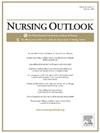Making nursing visible: AI-assisted standardization of electronic health record interventions using generative pre-trained transformer models and retrieval-augmented generation process
IF 3.7
2区 医学
Q1 NURSING
引用次数: 0
Abstract
Background
Nurses provide essential care that significantly impacts patient outcomes. However, nursing care is rarely examined due to a lack of standardized nurse-generated data suitable for large-scale analysis.
Purpose
To test the performance of retrieval-augmented generation (RAG) and generative pre-trained transformer (GPT) models in standardizing electronic health records nursing intervention terms.
Methods
The process involved: (a) manually mapping a subset of local terms to standardized terms to create a “gold standard” for comparison, (b) implementing and assessing the RAG pipeline with GPT models for standardization, and (c) incorporating the output into an AI-assisted manual mapping workflow.
Discussion
GPT models were comparable to human mappers but lacked sufficient accuracy for fully automated mapping.
Conclusion
Although GPT models are not yet reliable for full automation, they can reduce human workload and streamline the standardization process. This advancement represents an important step toward making nursing contributions visible through data-driven evaluation of nursing practices.
使护理可见:使用生成式预训练变压器模型和检索增强生成过程的人工智能辅助电子健康记录干预措施的标准化
护士提供的基本护理对患者的预后有重大影响。然而,由于缺乏适合大规模分析的标准化护士生成数据,护理很少被检查。目的探讨检索增强生成(RAG)和生成预训练变形(GPT)模型在电子病历护理干预术语规范化中的应用效果。该过程包括:(a)手动将局部术语子集映射到标准化术语,以创建用于比较的“黄金标准”,(b)使用GPT模型实施和评估RAG管道以实现标准化,以及(c)将输出纳入人工智能辅助的手动映射工作流。pt模型与人类制图者相当,但缺乏足够的精度来实现全自动制图。结论虽然GPT模型还不能完全自动化,但它可以减少人工工作量,简化标准化流程。这一进步代表了通过数据驱动的护理实践评估使护理贡献可见的重要一步。
本文章由计算机程序翻译,如有差异,请以英文原文为准。
求助全文
约1分钟内获得全文
求助全文
来源期刊

Nursing Outlook
医学-护理
CiteScore
6.20
自引率
7.00%
发文量
109
审稿时长
25 days
期刊介绍:
Nursing Outlook, a bimonthly journal, provides innovative ideas for nursing leaders through peer-reviewed articles and timely reports. Each issue examines current issues and trends in nursing practice, education, and research, offering progressive solutions to the challenges facing the profession. Nursing Outlook is the official journal of the American Academy of Nursing and the Council for the Advancement of Nursing Science and supports their mission to serve the public and the nursing profession by advancing health policy and practice through the generation, synthesis, and dissemination of nursing knowledge. The journal is included in MEDLINE, CINAHL and the Journal Citation Reports published by Clarivate Analytics.
 求助内容:
求助内容: 应助结果提醒方式:
应助结果提醒方式:


